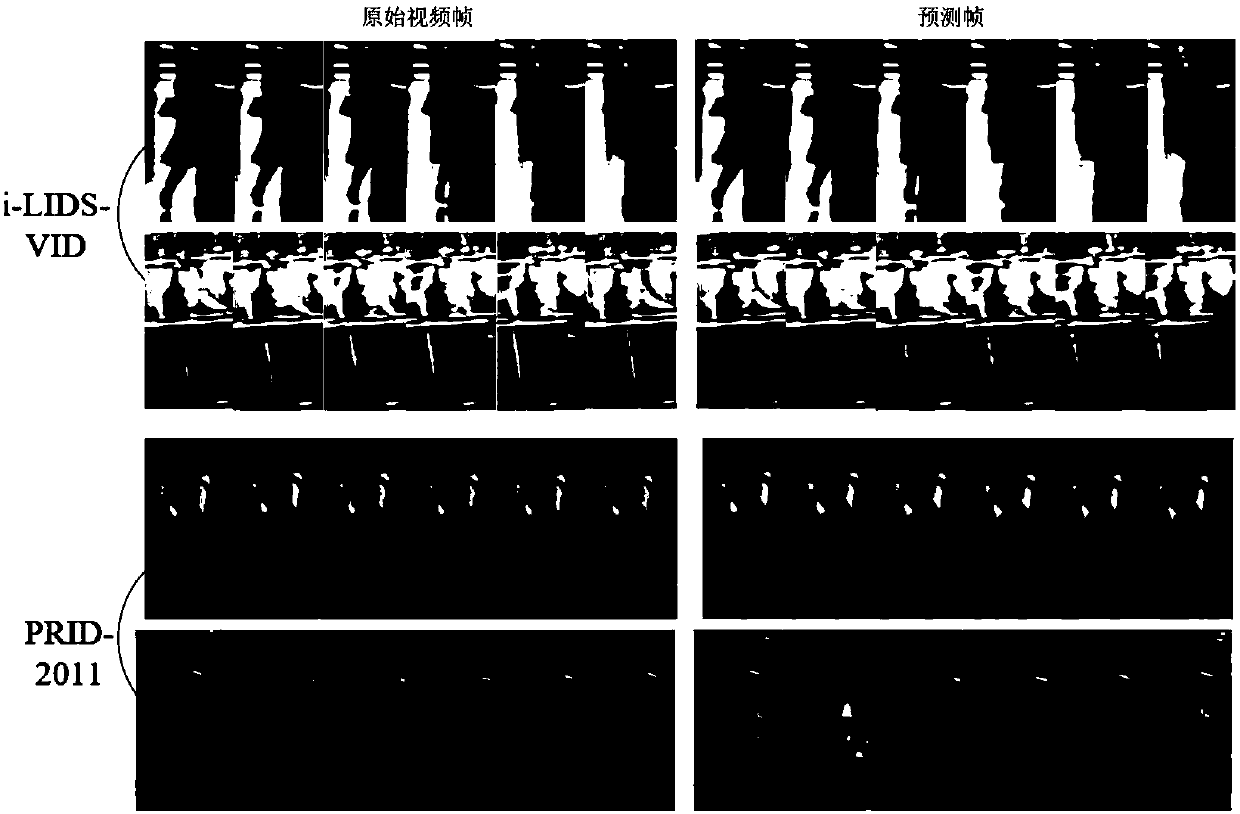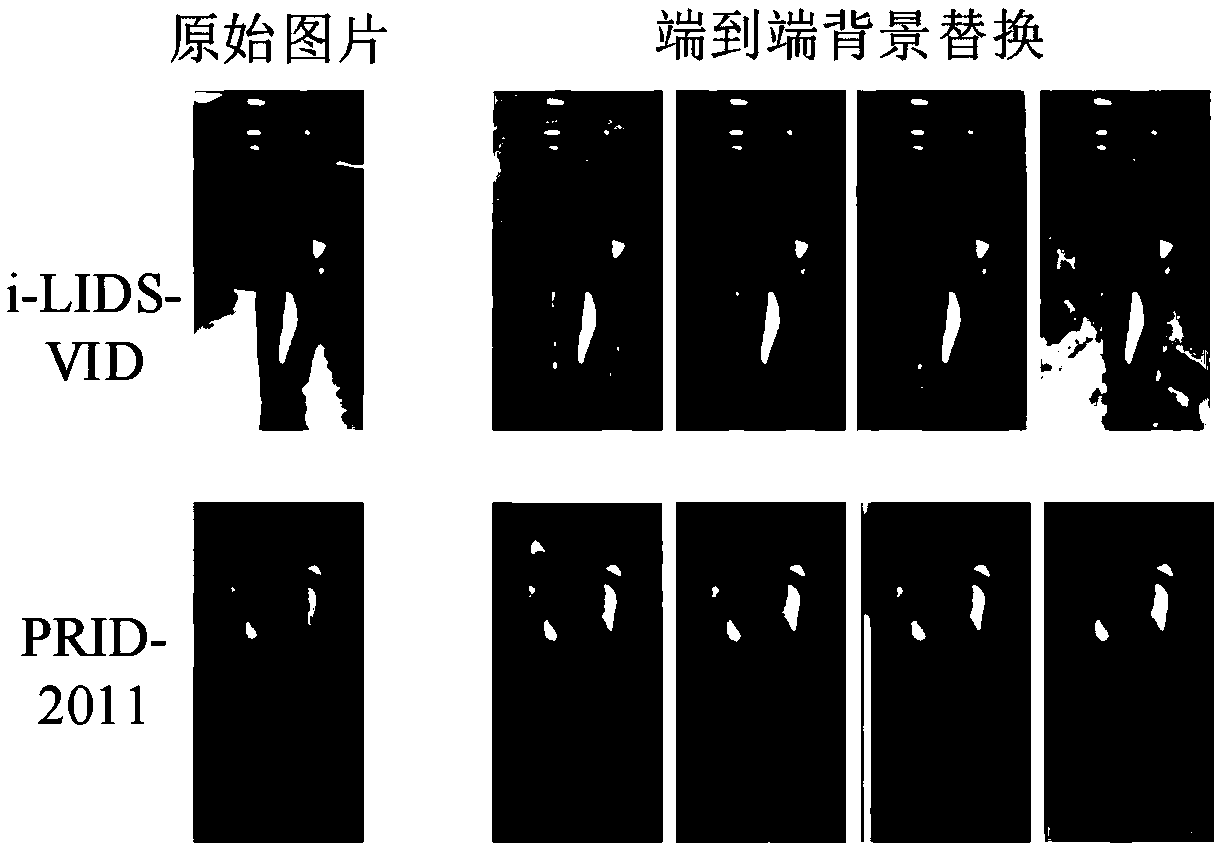Method for generating and expanding pedestrian re-identification data based on generative network
A pedestrian re-identification and data generation technology, applied in the field of computer vision, can solve the problems of insufficient reliability of labeling work, inability to provide diversity, limited performance improvement, etc., to reduce background interference, improve accuracy, and reduce complexity Effect
- Summary
- Abstract
- Description
- Claims
- Application Information
AI Technical Summary
Problems solved by technology
Method used
Image
Examples
Embodiment
[0057] The image frames used in this implementation come from the database PRID-2011 (see: Martin Hirzer, CsabaBeleznai, Peter M.Roth, and Horst Bischof.2011.Person Re-identification by Descriptive and Discriminative Classification.Springer Berlin Heidelberg.91-102pages) and i- Group surveillance video (video for traffic surveillance) in LIDS-VID (see: Wei Shi Zheng, Shaogang Gong, and TaoXiang.2009.Associating Groups of People.Active Range Imaging Dataset for Indoor Surveillance(2009)) for pedestrian re-identification performance evaluation.
[0058] The pedestrian re-identification data generation and expansion method based on the generation network involved in this embodiment includes the following specific steps:
[0059] Step S1: Intra-class data generation, using the video prediction generation network P to generate new pedestrian video frame samples.
[0060] The specific steps are:
[0061] S11. Based on an unsupervised video prediction generation network, a pedestri...
PUM
 Login to View More
Login to View More Abstract
Description
Claims
Application Information
 Login to View More
Login to View More - R&D
- Intellectual Property
- Life Sciences
- Materials
- Tech Scout
- Unparalleled Data Quality
- Higher Quality Content
- 60% Fewer Hallucinations
Browse by: Latest US Patents, China's latest patents, Technical Efficacy Thesaurus, Application Domain, Technology Topic, Popular Technical Reports.
© 2025 PatSnap. All rights reserved.Legal|Privacy policy|Modern Slavery Act Transparency Statement|Sitemap|About US| Contact US: help@patsnap.com



